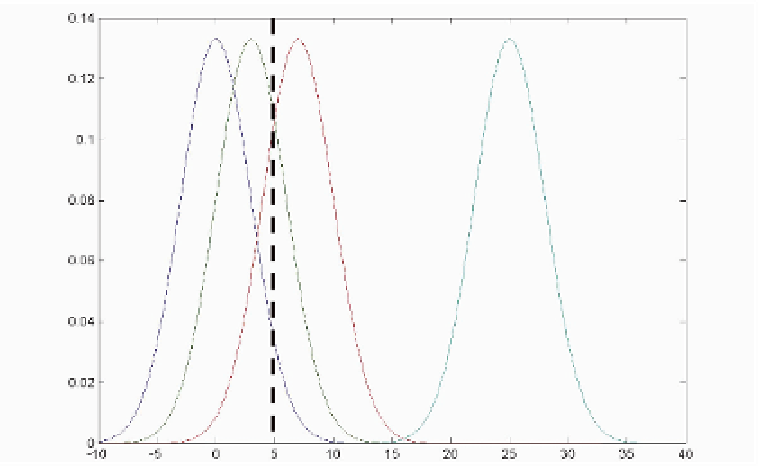Global Positioning System Reference
In-Depth Information
•
Integrity Flags (IF): this is a warning relative to a satellite that is transmitting a signal
with an excessive error. IF is based on the short term observation of the clock's
variations, the ephemerides and the RF signals.
•
Signal-in-Space Monitoring Accuracy (SISMA): this is an estimation of the accuracy of
the Signal-in-Space Error (SISE).
0.14
3
3
0.12
0.1
1
1
Threshold
Threshold
0.08
0.06
0.04
4
4
0.02
2
2
-10 -5 0 5 10 15 20 25 30 35 40
Fig. 1. Integrity events
Using the parameters described above, the user could check the integrity, as follows:
•
In a faulty free condition, SISA overbounds the SISE distribution.
•
SWs set as NOT OK or NOT MONITORED are discarded from the position computation.
•
The user receiver computes the Protection Level using SISA and SISMA parameters.
•
PL is compared with the specific AL.
2.1 Faulty free protection level
The Galileo Integrity system is based on the concept of Protection Level. Its main purpose is
to calculate the error's bound in the position estimate, in order to be able to control this error
with a sufficient level of confidence.
The user receiver judges the accuracy of the computed position solution, typically in term of
Horizontal Protection Level (HPL) and Vertical Protection Level (VPL), by means of an
estimate of the system errors, an estimate of the local errors and the knowledge of the
number and geometry of the SWs used for the positioning algorithm. The computed
Protection Level is then compared with a specific Alert Limit, in order to determine the
availability of the navigation service.
The original definition of integrity belongs to the position domain, but it can be translated
into the Signal-in-Space domain. As a matter of fact, the position error can be replaced by
the SISE and the Protection level by the SISA.
















































Search WWH ::

Custom Search